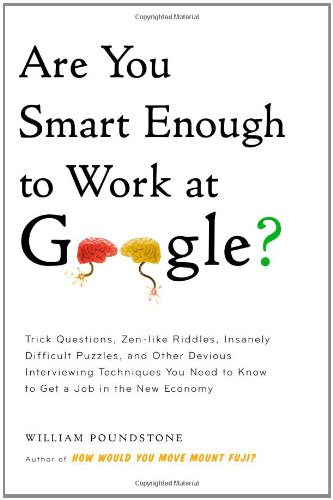Organimi’s org charts help people connect, communicate and collaborate at work. Using our cloud based org charting and organizational design tools you can chart the entire organizational lifecycle for everyone on your team – from recruiting and onboarding through their career progression all the way to their departure.
Organimi works whether they are an “employee”, a “member”, a “student”, an “associate”, a “partner” or any other noun you choose to describe membership in the organization you are designing for.
 One of the interesting things about working at Organimi is learning more all the steps along the organizational lifecycle path.
One of the interesting things about working at Organimi is learning more all the steps along the organizational lifecycle path.
Today’s blog focuses on recruiting.
In particular, we make some comments about the theme of “exceptionalism” lurking beneath the surface of the recruiting programs reported to be popular with a growing number of organizations…and about the weak assumptions this shift appears to be based on.
Today, we set up the “straw man” of using logic puzzles, math problems and other complex questions (aka “smarty pants tests”) as a recruiting tool. We explore recent trends, knock the idea down, and finish off with some closing observations we hope you think make sense…and don’t sound too preachy.
It’s A Jungle Out There! And This Trend Is Not Your Friend.
Our jumping off point for today is William Poundstone’s book Are You Smart Enough To Work At Google?.

His book builds on similar stories he developed about HR practises at Microsoft and other organizations. It has received mixed reviews. If you’re looking for a sense of the storyline, you can check out Leo Benedictus of The Observer who has a nicely balanced review.
For our purposes, though, the book jacket pretty much says it all:
In today’s increasingly competitive job market, top companies have fewer positions to fill and a growing number of candidates to fill them. With more than 70 insanely tough interview questions and their answers, Are You Smart Enough to Work At Google? will teach you the secrets to getting your foot in the door, standing out from the pack, and landing your dream job in the new economy
Those of a certain age may remember the old line “it’s a dog eat dog world out there and sometimes I feel like I’m wearing MilkBone underwear”.
The competition is relentless. We all see and feel it. Every day. Everywhere.
There’s nothing particularly new in Poundstone’s book here in that sense. And a number of the puzzles are even fun, for those who like such things.
But imagining having these questions – or even ones remotely ressembling them – tossed at you in an interview, would likely be pretty nerve-wracking for most people. Even among the smarty pants types…so you see where we’re going with this.
Poundston summarizes how best practises in recruiting methodology have evolved over the past 50 years from being “work sampling” based (sensibly enough, with testing and selection criteria directly related to the actual work expected) through “IQ” assessments (focused on measuring intelligence), to more recent searches for “creativity”, “innovation”, “entrepreneurialism” and the like (with assessments focused on measuring divergent thinking).
Poundstone’s insights come largely from examples and stories found in the technology and knowledge based industries. There may be some valuable insight in learning more about the ins and outs of recruiting at organizations such as Google. And if nothing else, Are You Smart Enough has a great collection of math problems and logical puzzles readers can try to solve.
But what the book suggests about the evolving notions of “best practises” in recruiting processes for large organizations in the knowledge economy – exemplified as Poundstone describes it by the use of “puzzling, and sometimes bizarre, questions in personnel assessments” – smells of something that seems just plain wrong.
Are We Missing Jobs, Missing Skills, Or Just Missing The Point?
The other “book end” for today’s blog is a recent article we saw from Bloomberg blogger Caroline Baum.
In “US Has Plenty of Jobs; Not Enough Skills” Baum reports on the health of the US jobs market, noting that in the US alone 50 million people change jobs every year.
With so many job changes every year, and so many people now working 2 or more jobs, organizations are in a constant state of flux.
Baum notes that many small manufacturers “can’t find skilled workers”, reflecting she suggests “a skills mismatch or the inability of families to move to where the jobs are”. Baum’s intent is positive; she is hoping that by shining a light on the dynamism of the US labor market she can provide some hope. As she suggests “there’s nothing like a job offer to give consumers a shot in the arm. Maybe if they knew about the active churning in the labor market, they just might feel better.”
[Queue the Organimi product message again]
This reality – of dynamic, ever changing workplaces – is one of the reasons we launched Organimi.
***
We think 50 million job changes every year creates a great use case for simple, cloud based org charts. Tools every organization can use, so people in their workplaces can easily connect, communicate and collaborate….you know, actually get to know each other a bit better!
***
But we’re not so sure Baum’s boosterism on the dynamic change of the labour market is right. And we’re not alone.
One of the many nice things about the web is the transparency – reactions are pretty immediate, and comments are posted for everyone to see. Baum’s post triggered 40 comments (a lot of comments in social media for a posting like this by any measure).
The general theme of the comments revolves around disbelief in the premise of her article (there are quality jobs out there, but people need to deal with skills issues and relocate if necessary). More fundamentally, a sense of malaise – depressed wages, corporate exploitation of labour, and decline. A sense of fatalism and disengagement about the basic value of work.
As PutridPundits says
“We keep hearing this same lie. Many small manufacturers complain that they can’t find skilled workers” but the truth is that when an employer says they cannot find skilled workers to do the work, what they are really saying is that they cannot find skilled workers willing to work for the low wages they are offering. Wages have been stagnant for too long and workers don’t want to get paid far below their value.”
So what’s really going on?
Are We Helping People Land Dream Jobs or Creating Job Search Nightmares?
 Baum’s article is not unique. It is only one of the many, many stories we all read these days – stories of vast pools of highly skilled (and in some versions even overqualified) individuals competing for a shrinking pool of highly paid “knowledge” jobs, while other positions (typically described as “STEM” roles in sciences, technology, engineering and math) go unfilled.
Baum’s article is not unique. It is only one of the many, many stories we all read these days – stories of vast pools of highly skilled (and in some versions even overqualified) individuals competing for a shrinking pool of highly paid “knowledge” jobs, while other positions (typically described as “STEM” roles in sciences, technology, engineering and math) go unfilled.
These stories range from those about the loss of high paying (usually manufacturing) jobs, to stagnant incomes and the decline of the middle class, to mismatches between what the educational system produces and what the job market needs, to a lost generation of exceptionally well qualified young people who cannot find meaningful work, to the devaluing of labour through globalization and the commoditization of work in almost every discipline and sector. Pick your theme. They’re all sadly familiar.
We talked in a recent blog about the workplace diversity agenda, the changing demographics of work environments, and the tongue-in-cheek portrayal of worklife in the Googleplex seen from the movie The Internship (with its Hollywood ending of the “normal” people and the “geeks” working and winning together).
But for lots of people, things aren’t that funny…and things aren’t ending that well.
Poundstone’s book may help explain why. While recruiters seek new tools and methods to identify and categorize the hard to find perfect candidates they’re looking for, the aspirations of a generation of underemployed workers seem to be getting short shrift. And don’t forget the unlucky among the supposed “well off” boomer generation who have been packaged off…without the packages….and are also trying to find work as globalization abroad translates into downsizing at home.
We should acknowledge here that Poundstone is not talking about recruiting for all jobs. He seems to be talking about “higher end” jobs in the knowledge economy.
So let’s leave it at the high end, then. Where are we really at?
Ending Exceptionalism: Is There A Smarter Move?
Poundstone’s book is based on a series of complex brain teaser recruiting tests supposedly followed by Google and being increasingly copied by others.
But Google is at the apex of the high end jobs marketplace, receiving 1 million + job applications a year and accepting 1 in 130 candidates, from a global pool of high calibre talent that is attracted by its much publicized and likely well deserved “best employer” attributes.
The Google perks, like its recruiting methodology, have been borrowed from earlier tech titans and are now copied elsewhere in the Valley. They are already legendary — spawned by a seemingly never ending geyser of cash from Google’s profoundly lucrative model to organize (and through paid search monetize) everyone’s access to the world’s online information.
Poundstone’s book seems to be a useful resource for people cramming for a job interview at Google, or any other company aspiring to the Google model, but the underlying message is not a positive one; in fact it seems to be a deeply negative one.
As Poundstone notes “we live in an age of desparation. Never in living memory has the competition for job openings been more intense. Never have job interviews been tougher. This is the bitter fruit of the jobless recovery and the changing nature of work.”
Particularly curious is this trend to exceptionalism because of the “damning statistics”. As he describes it “the evidence for the usefulness of job interviews is not unlike the evidence for extra-sensory perception or alien abductions. There are some great anecdotes but the closer you look at the data the less compelling it is. In practise, job interviews appear to have little or no power to predict success on the job, beyond what might already be predicted from work experience or education.”
Google is clearly a great company, doing great things. The problem with parroting the “brain teaser” components of Google’s hiring methodology is that it likely doesn’t work — even for Google. Applying the Occam’s Razor principle, the much simpler explanation for why Google is so successful at the recruiting process is because of the simple fact of its business success. Tautology or virtuous circle. Either way, it is what it is.
When we say “work” we mean provide a complete, or even the best, explanation of the outcome (ie the fact that Google is generally recognized to overindex on hiring great people going cool stuff).
In Poundstone’s book Amazon’s hiring manager Stephen Yegge is quoted as waxing enthusiastic about Google’s recruiting process as being somehow “different in kind”. But he actually provides a different, simpler and more likely accurate explanation for Google’s success when he observes that “Google has managed to turn the recruiting process around. Smart people now make the pilgrimage to Google, and Google spends the bulk of their time turning great people away.”
Hasn’t such always been the case? In the not too distant past Microsoft was the magnet for the brightest and best. My smarty-pants bro has taken a job at uber cool Tesla, which also likely has no difficulty in attracting the brightest and best.
This won’t change.
But does this mean other organizations should follow suit? Or expect similar results if they do?
Poundstone notes that “today’s employers feel a not unreasonable obligation to make the most of their unprecedented ability to be selective….In mainstream companies as well as the tech field, unusual and occasionally deceptive techniques are turning about in the name of guaging “creativity” or “cultural fit”.
 The “not so funny” aspect of this, of course, is that most of these tests don’t work. The science suggests they are entirely unpredictive of workplace outcomes or future employment success.
The “not so funny” aspect of this, of course, is that most of these tests don’t work. The science suggests they are entirely unpredictive of workplace outcomes or future employment success.
In a recent article on loneliness journalist Elizabeth Renzetti explores the “great irony of our age that we have never been better connected, or more adrift”. She discusses this issue in the context of health and wellness but we can see similar parallels in our organizational relationships at work.
Recruiters have all the tools and methodologies at hand needed to elevate job selection to a precise science, and devote huge amounts of time and resource to finding the “best” candidates, but the real underlying issue is the absence of jobs in a stagnant economy.
In this context, recruiting strategies that have no predictive value, and probably shouldn’t be followed, when the odds are that they generate more harm than good.
Maybe the first principle of recruiting should be to take a page from the doctors and “do no harm“.
What’s the harm?
Maybe just the feelings of rejection and failure that come to those unable to navigate the skinner box tests recruiters are applying to determine creativity, entrepreneurialism, innovation or whatever other garden variety buzzword of capability is being sought.
In a global jobs climate where the stakes are high and the opportunities for many are more elusive than ever, that seems to be adding an unnecessary insult to a nagging and potentially chronic injury.
What’s A Recruiter To Do? Let’s Keep The Human In Human Resources
Recruiting is an essential requirement for every organization looking to strengthen its “talent pool”. But recruiters shouldn’t impose clearly unrealistic expectations on themselves – or on anyone else.
Aspirationally, screening at the front end for “exceptionalism” also seems clearly out of step with the things that made us great in the first place – giving people chances, taking risks, and making things happen. Believing in people, valuing diversity, suspending judgment and making it possible for people to realize their potential in the workplace.
Smarty pants questions are just another example of the “helmet society” at work – recruiters using bogus tools to de-risk and group think their hiring decisions.
In a recent blog focused on the recruiting process from the perspective of candidates, Gerry Crispin talks at this humanistic level when he suggests recruiters “consider your candidates as partners in a process that helps them select the best job for their career” at this point of time in their lives.
That seems to us to be a much more constructive approach then thinking of them as skinner box rats you’re experimenting with, while laying side bets with your fellow participants in the recruiting process for your organization on whether a candidate will get the cheese.
Our point today is that “borrowing” the recruiting methodologies of companies like Google may well not be your best strategy….and (at least in today’s job market) is hugely unnecessary. Relying on a short list of goofy brain teaser questions is not going to have any predictive value in determining likely future outcomes for your hires.
We think Suzanna Lucas, a columnist with Inc.com, nails it when she writes:
“Hiring is broken in America. The high unemployment rate does not mean that companies should hold out for perfection. If you truly need someone to do a job, you’re losing money every day that position is not filled. Get some guts and bring in the top five candidates for your position, and make a promise to hire out of that group. Your chances of being disappointed in the long run? Very slim.”
Amen.

